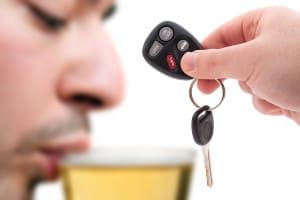 You know that drinking and driving is bad, and if you read this blog regularly, you know just how bad it can be. But have you ever thought about how alcohol affects your driving? Using info gathered from the around the web, Totaldui.com explains the science behind the effects of alcohol in the colorful, easy-to-read infograph titled “The Scientific Effects of Drunk Driving.”
You know that drinking and driving is bad, and if you read this blog regularly, you know just how bad it can be. But have you ever thought about how alcohol affects your driving? Using info gathered from the around the web, Totaldui.com explains the science behind the effects of alcohol in the colorful, easy-to-read infograph titled “The Scientific Effects of Drunk Driving.”
Alcohol causes the muscles in your eyes to relax, which can lead to light sensitivity, blurred vision, color impairment, tunnel vision, and a decrease in depth perception the more you drink. Alcohol also hinders your brain’s ability to communicate with your body, affecting muscle control, coordination, speech, and judgment, and decreases brain activity. Decreased activity in certain parts of the brain leads to the following effects:
- Impulsive thinking and decision-making
- Impaired coordination, which makes operating machinery or walking in a straight line difficult
- Fatigue/drowsiness, slower breathing, and decreased body temperature
How much alcohol affects your vision and brain function depends on your age/gender, genetics, general health, how much you drink, and how long you’ve been drinking. While driving with a blood alcohol concentration (BAC) of 0.08 or higher will get you arrested in any state in the U.S., impaired behavior can start to occur once your BAC hits 0.04. Depending on age, amount of alcohol consumption, and other factors, someone can be impaired after just one or two beers.
To stay safe, never drink and drive, no matter how much or how little you’ve had to drink. Take the bus, hail a cab, or call a sober friend or family member who lives nearby. If you plan on drinking, designate a sober driver or make other safe arrangements home before heading out.
